It does not interact with the regular atoms we know of. It does obey the law of gravity. We can imagine, for example, that if we were to suddenly turn the Sun into dark matter and somehow keep it in the same location and shape, the Earth would still orbit around it. We orbit the Sun because of its gravity, and with a dark-matter version of it, we would still orbit around it — we just would not see it.
Invisible dark matter in the universe
Professor of physics and astrophysical sciences
- Dark matter makes up roughly five times more mass than visible matter, influencing cosmic structures through gravity while remaining invisible to light.
- Astronomer Vera Rubin’s measurements of unexpectedly fast star rotations in spiral galaxies provided decisive evidence that massive dark matter halos surround galaxies.
- Modern projects like the Atacama Cosmology Telescope map dark matter by tracking how it bends the cosmic microwave background, turning long-duration sky scans into detailed mass maps.
- The new maps match the standard cosmological model, confirming dark matter’s gravitational behavior, but scientists still do not know the particle’s identity or the nature of dark energy.
Dark matter
We have this component in the universe that we call dark matter. We do not yet know what it is, but we think we understand how it behaves. Let's think about this. We think that dark matter is stuff that follows the law of gravity but does not interact with light at all, or with the particles of our bodies or our planet or anything. What does that mean? It means that, if dark matter is a new kind of particle, it can travel through our body, through anything.
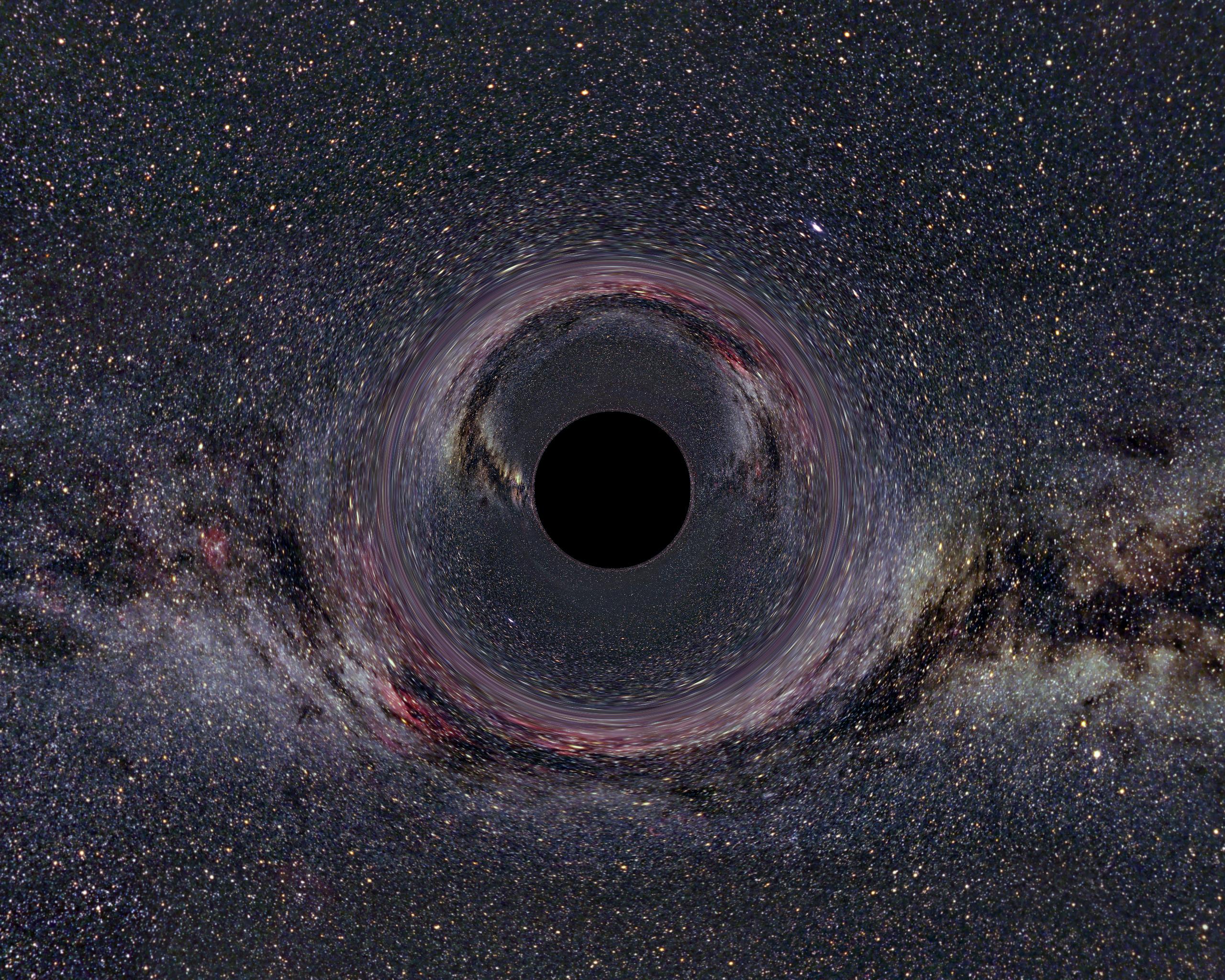 Black Hole Milkyway © Ute Kraus via Wikimedia
Black Hole Milkyway © Ute Kraus via Wikimedia
Hints of invisible matter
We have known, or had a sense, that this stuff has been out there for nearly a hundred years now. It was astronomer Fritz Zwicky who first named it. He called it dunkle Materie in German in an article. He discovered it because things seemed to be moving too fast in a cluster of galaxies.
Now, let's think about the Sun. We orbit the Sun; it takes us a year. That is what defines our year: it takes us 365 days to go around the Sun. If I were to make the Sun heavier and enhance its gravity, we would change the rate at which we orbit — we would go around faster. You can use this property, when looking at objects moving in space, to weigh things.
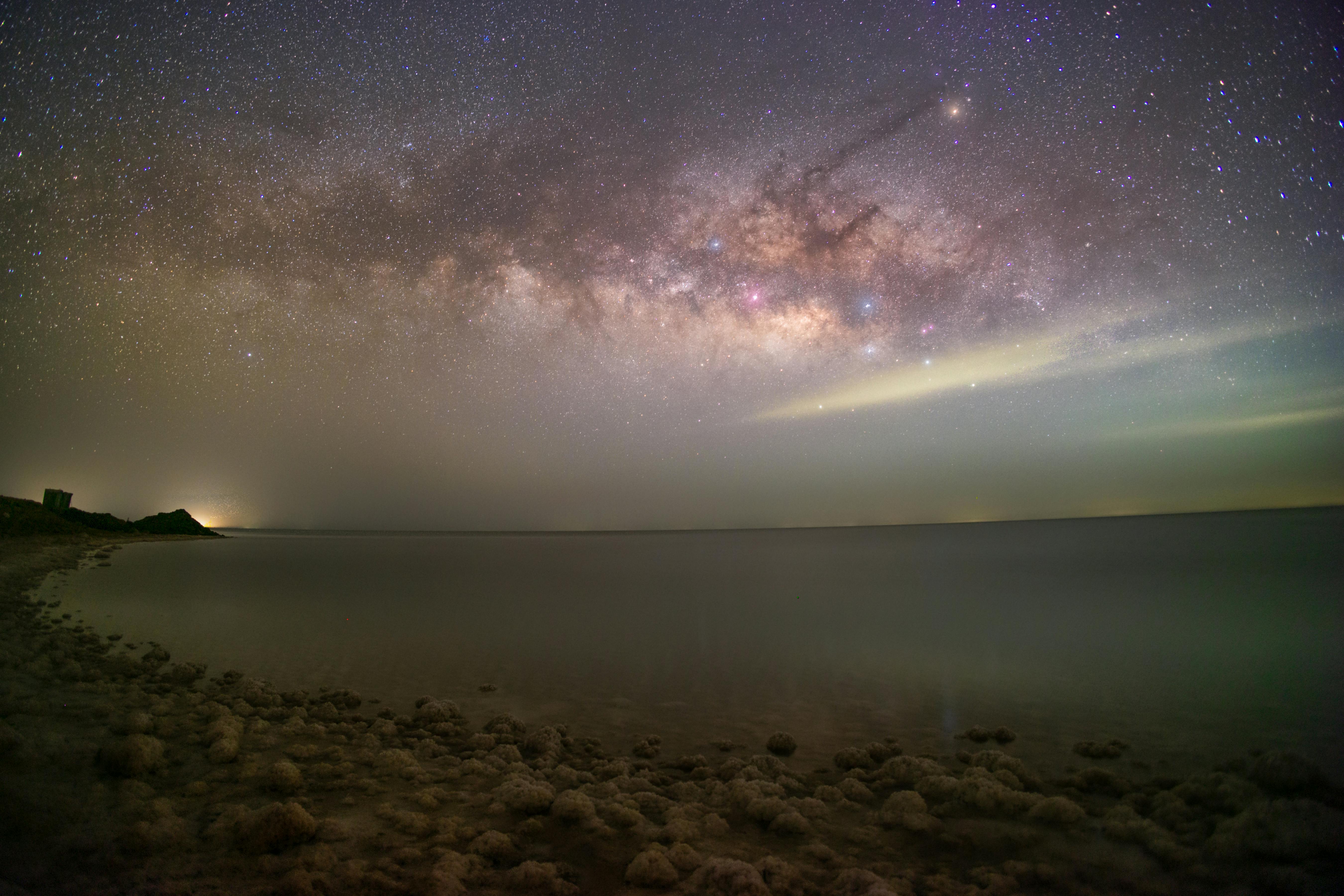 Milky Way Photography © Pexels
Milky Way Photography © Pexels
We cannot physically go and weigh anything in space with a scale, so we have to devise methods to weigh things in space. If you imagine looking at a cluster of galaxies — a grouping of many galaxies together — and the galaxies themselves appear to be moving too quickly, as if they are orbiting around the gravitational pull of something we cannot see, then this implies that maybe there is something there.
Disk of a galaxy
This idea lay dormant for a number of years and was picked up by astronomer Vera Rubin, who is another great hero of mine. She and her colleague Kent Ford were looking not at whole clusters of galaxies but at individual galaxies — spiral galaxies a little like our Milky Way — where a spiral galaxy spins around because of the gravity of all the stuff in it.
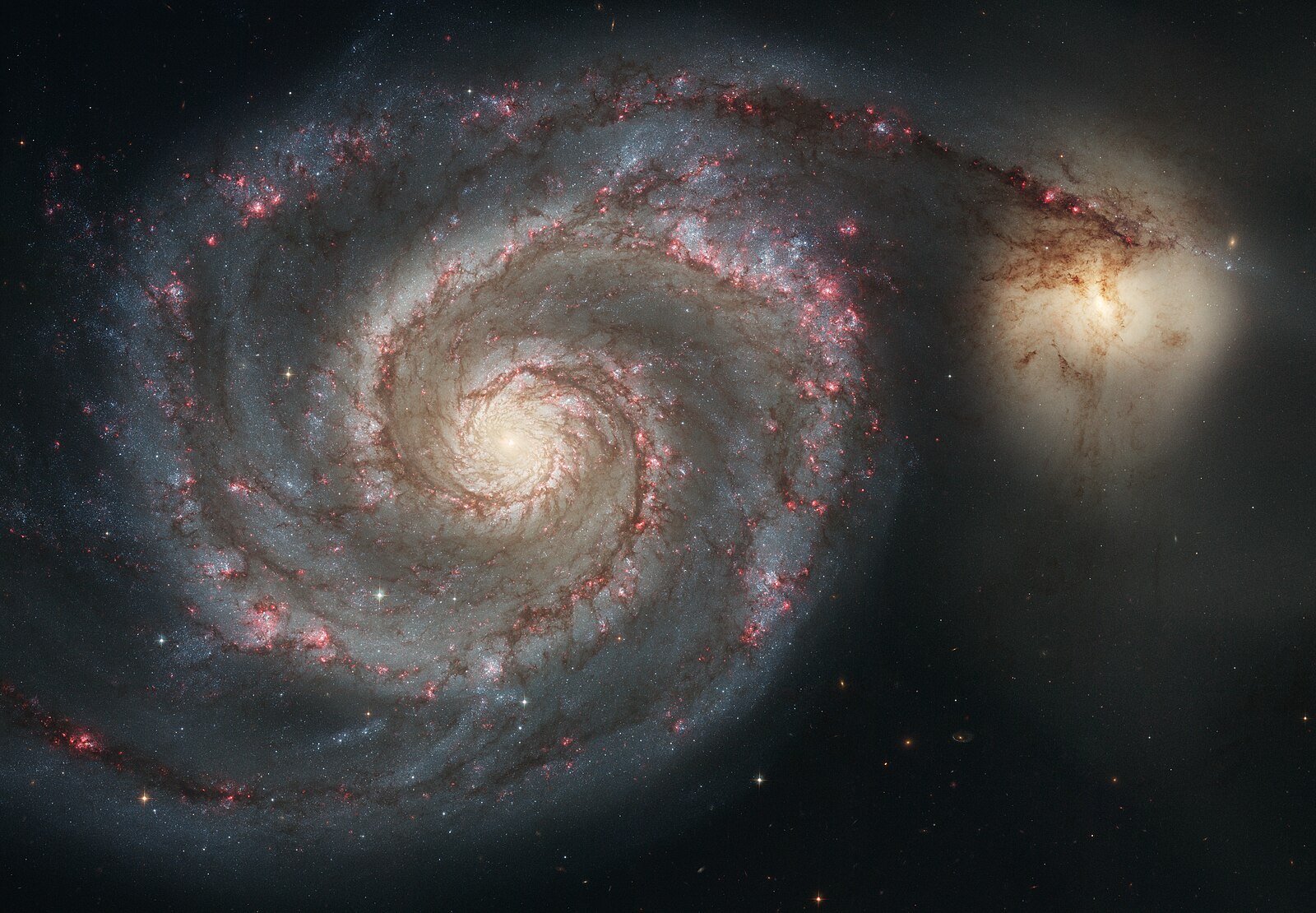 The Whirlpool Galaxy © NASA, ESA, S. Beckwith (STScI), and The Hubble Heritage Team STScI/AURA
The Whirlpool Galaxy © NASA, ESA, S. Beckwith (STScI), and The Hubble Heritage Team STScI/AURA
If a galaxy were only made of stars, plus some gas and dust that emit light, then you could make a specific prediction for how fast the stars in that galaxy should orbit based on the gravity of all the material you can see. What Vera Rubin and Kent Ford discovered is that the stars at the edges of the galaxies were orbiting much too fast for just the visible stuff in the galaxy. The inference then was that there was actually not just the stars, this gas and the dust that is in them, too, but a lot of invisible matter — on average, five times the mass of all the visible stuff.
You can imagine our Milky Way disk is not just the stuff you can see but also an invisible kind of halo, almost a sphere, that the stars are embedded in. At a similar time, theoretical work by astronomers including Jerry Ostriker and Jim Peebles showed that galaxies would only keep their disk shape if this invisible dark matter surrounded them, too.
Vera Rubin’s influence
 Vera Rubin © KPNO/NOIRLab/NSF/AURA
Vera Rubin © KPNO/NOIRLab/NSF/AURA
Vera Rubin was such a pioneer of this field. As a woman at that time, she could not go to any university she liked but ended up having a very successful career. She had to keep pushing to do what she wanted as a scientist; that included evening classes while juggling childcare and then being the first woman allowed to use the large new telescope available at the time. Only men were allowed to use it before. She pushed forward, insisting that she be able to use the telescope to measure rotating galaxies.
What is wonderful now is that there is a huge new optical survey: we have made our new map of dark matter, and another new map will come from measurements of galaxies distorted by dark matter. That will be produced by the Vera Rubin Observatory, now named for her. Many of us were delighted when this important new observatory in Chile officially took her name.
Evolving understanding
Over the last 50 years, we have really come to be persuaded by all the observational evidence that this stuff is there. It surrounds every galaxy and, on larger scales, behaves like a cosmic web — filaments or almost tendrils of invisible matter between galaxies. If we could only see the universe with dark-matter goggles, we would see an intricate cosmic web of dark matter, and the visible galaxies would be like jewels scattered on it.
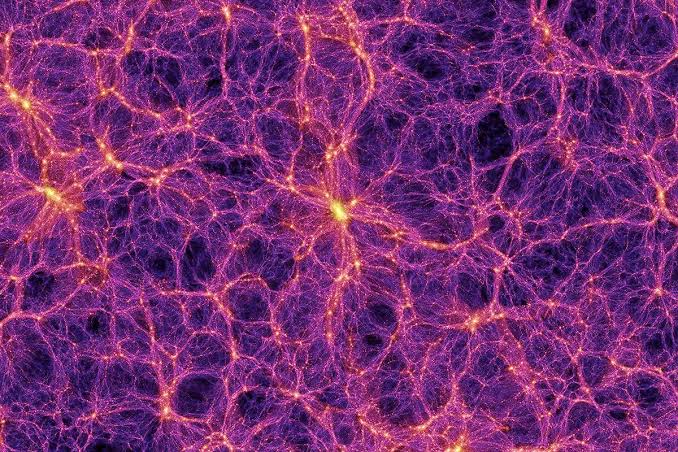 Cosmic web © Volker Springel/Max Planck Institute For Astrophysics
Cosmic web © Volker Springel/Max Planck Institute For Astrophysics
An analogy I like is to imagine looking down on Earth at night. You see the bright lights of the cities but not the dark land underneath, yet the dark land is a rich and plentiful world. From orbit at night, you cannot see it. We think the universe behaves like that, too. The stars and the galaxies full of stars are just a tiny part of the larger, invisible universe.
Mapping the invisible
We have been making this new map of dark matter by looking not at how things spin around, as was done earlier, but at how light gets bent around invisible stuff. If I were a source of light and there were a big invisible mass in front of me, the light — Einstein's gravity tells us this — would get bent around it. If I could measure how much the light is bent, I could infer that there is something there.
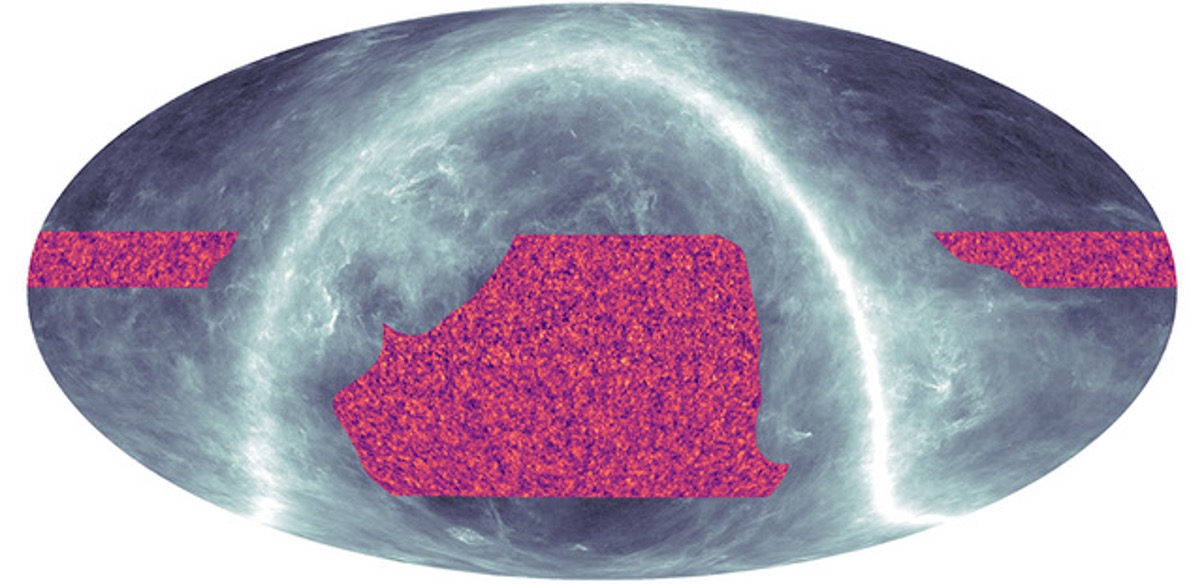 A new map of the dark matter © ACT Collaboration
A new map of the dark matter © ACT Collaboration
That becomes a new kind of weighing scale or way of seeing the invisible — using a backlight and measuring how much the light is distorted — because the heavier something is, the more a ray of light has its path bent. We get to see this in beautiful visuals (work my team does not do, but I love to look at) where galaxies themselves get bent around invisible matter. This is called strong lensing, and recent images from the James Webb Space Telescope and others show arcs of light where a galaxy that started as a spheroid is stretched into an arc by the light bending around the invisible mass.
Bending the light
I have been working on the Atacama Cosmology Telescope project, a team of about 160 people internationally. We have been measuring the bending of light where the backlight is not galaxies but the cosmic microwave background — that primordial light from the beginning of the universe. It is powerful because it is the furthest light we can see; it comes to us from all around the sky and has been traveling for 14 billion years, almost the whole age of the universe. It has been gently bending around all the invisible matter in the universe.
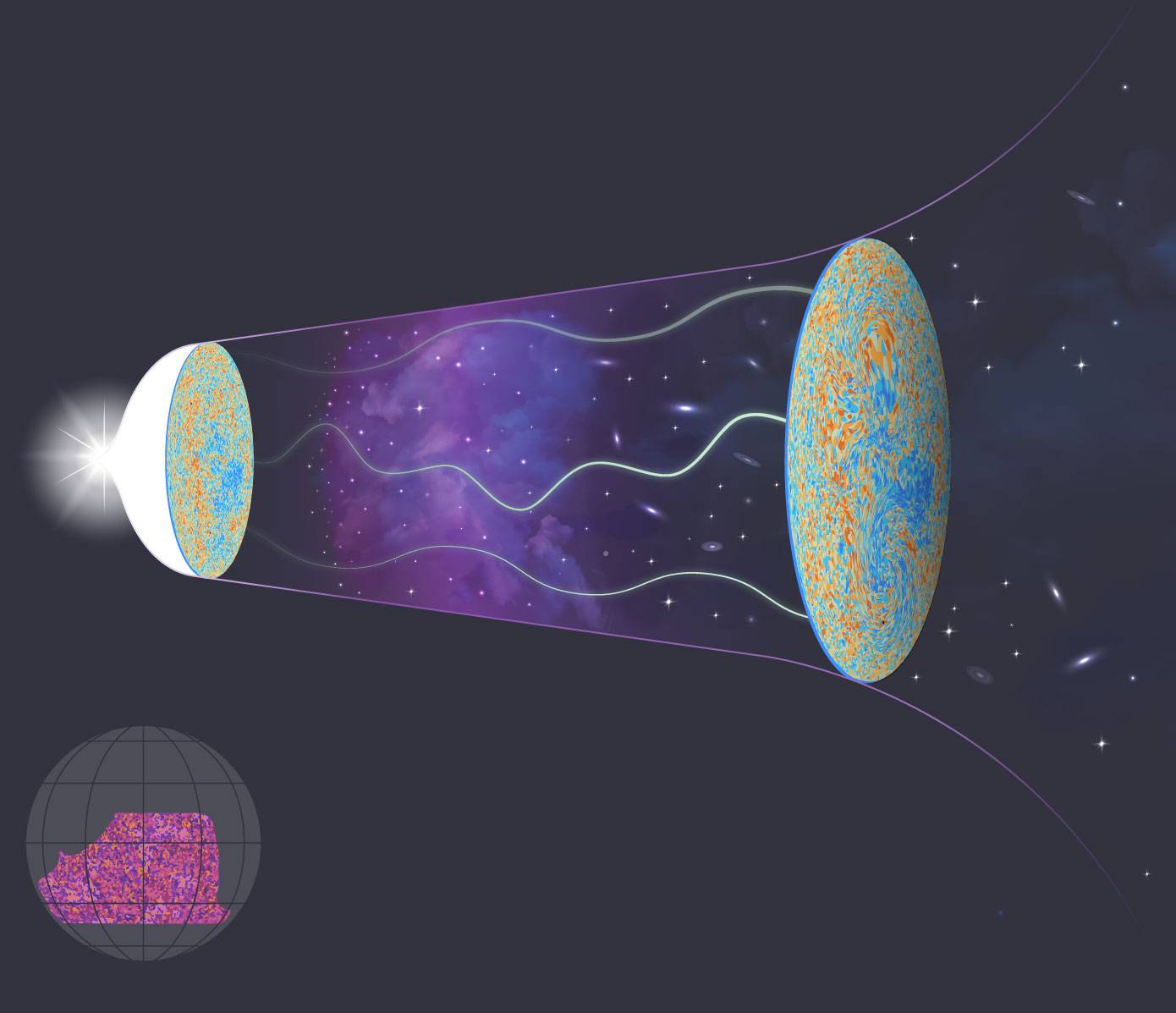 © Lucy Reading-Ikkanda / Simons Foundation and the ACT Collaboration
© Lucy Reading-Ikkanda / Simons Foundation and the ACT Collaboration
By using that most distant backlight, you can weigh, on average, the total invisible matter around us in a sphere. That is what we were doing with a new image of the microwave background made with the ACT telescope. I love this project, because it brings together 160 people who all play different parts in a long effort. Some build very sensitive detectors to capture the light. Some have installed and operate the telescope on a mountaintop in Chile 5,000 meters up. Others gather the data and keep the telescope running. We take the data that scans the sky for years on end and turn it into a new image of the microwave background.
Because the telescope in Chile has a dish six metres in diameter, it can see this early-universe image in higher fidelity — higher resolution than was previously possible — and that has allowed us to tell how it has been distorted by invisible matter on its journey to us.
Tracking the sky
Many of our colleagues are involved in making that map, and other parts of the team work on figuring out how much the light was distorted, therefore mapping how much dark matter must be at any point in space. One of the final outcomes is this new map of invisible matter, which is incredible that we can do this at all.
The map now looks like a spotty, blobby image, purple and orange, tracking where in the sky there is more or less dark matter. It weighs the average amount of invisible matter in different parts of space. I find it remarkable that, by measuring what you can see and understanding the laws of gravity, you can infer where the invisible stuff is.
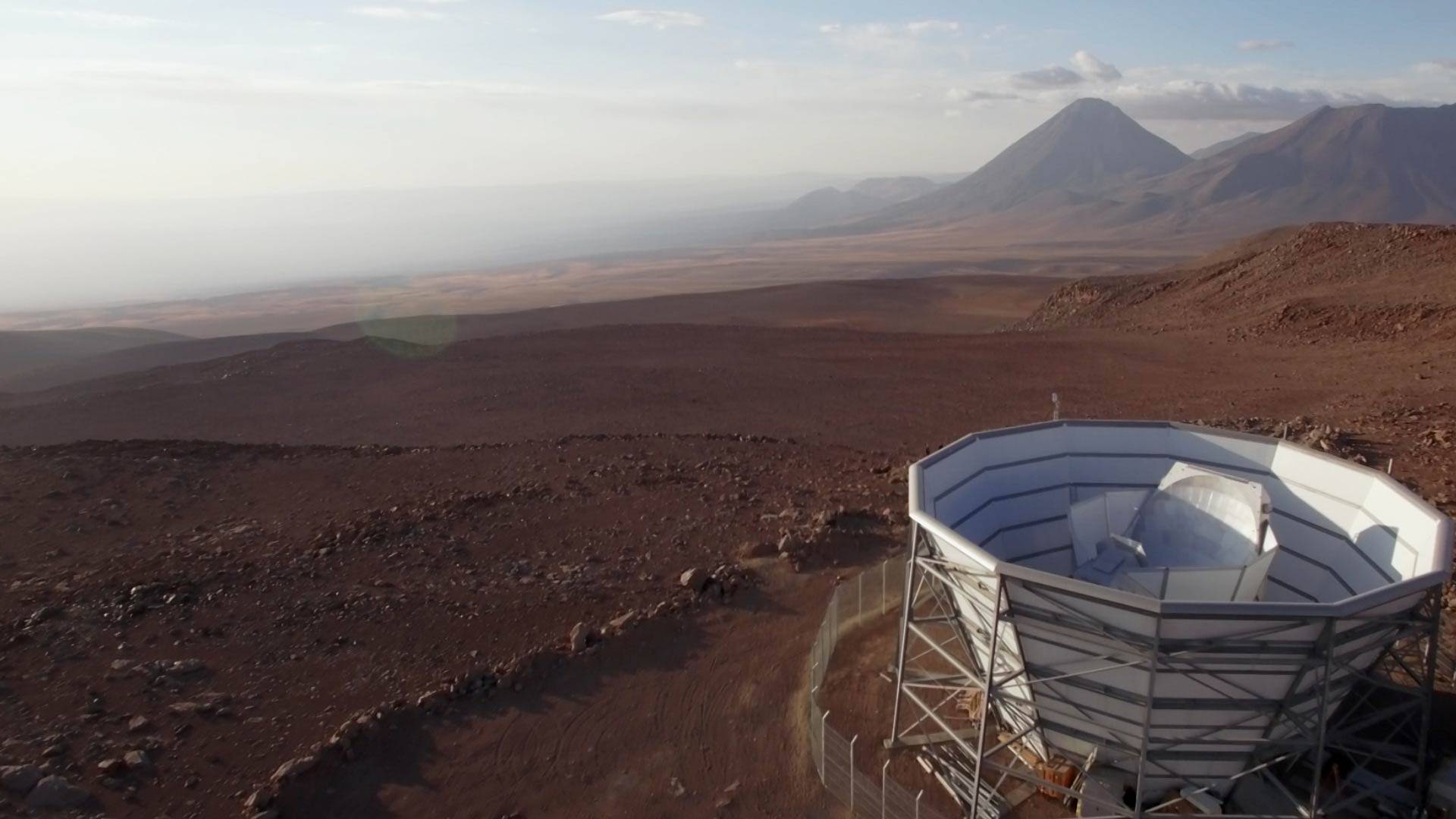 The Atacama Cosmology Telescope © Debra Kellner
The Atacama Cosmology Telescope © Debra Kellner
With the new map, more people in our team are checking whether the amount of dark matter makes sense with our current cosmological model and whether it behaves as we expect. So far, it seems to behave as expected, but it has not yet told us what the dark-matter particle is. We can see where it is and how it is behaving, but we still do not know what this mysterious component is made of.
Dark energy
The new map showed that the behavior of dark matter on average through the universe does seem to be what we expect in the standard cosmological model. There had been concerns that the behavior of dark matter might change with time, but what we found supports the model.
It also highlighted that, while it characterizes the dark-matter part of the invisible universe, it has not fully weighed in on the other dark component we call dark energy. We think the universe's ingredients are the regular matter we are made of, this dark-matter component that may be a new particle following gravity, and dark energy, which has dominated the universe's energy density for the last seven or eight billion years.
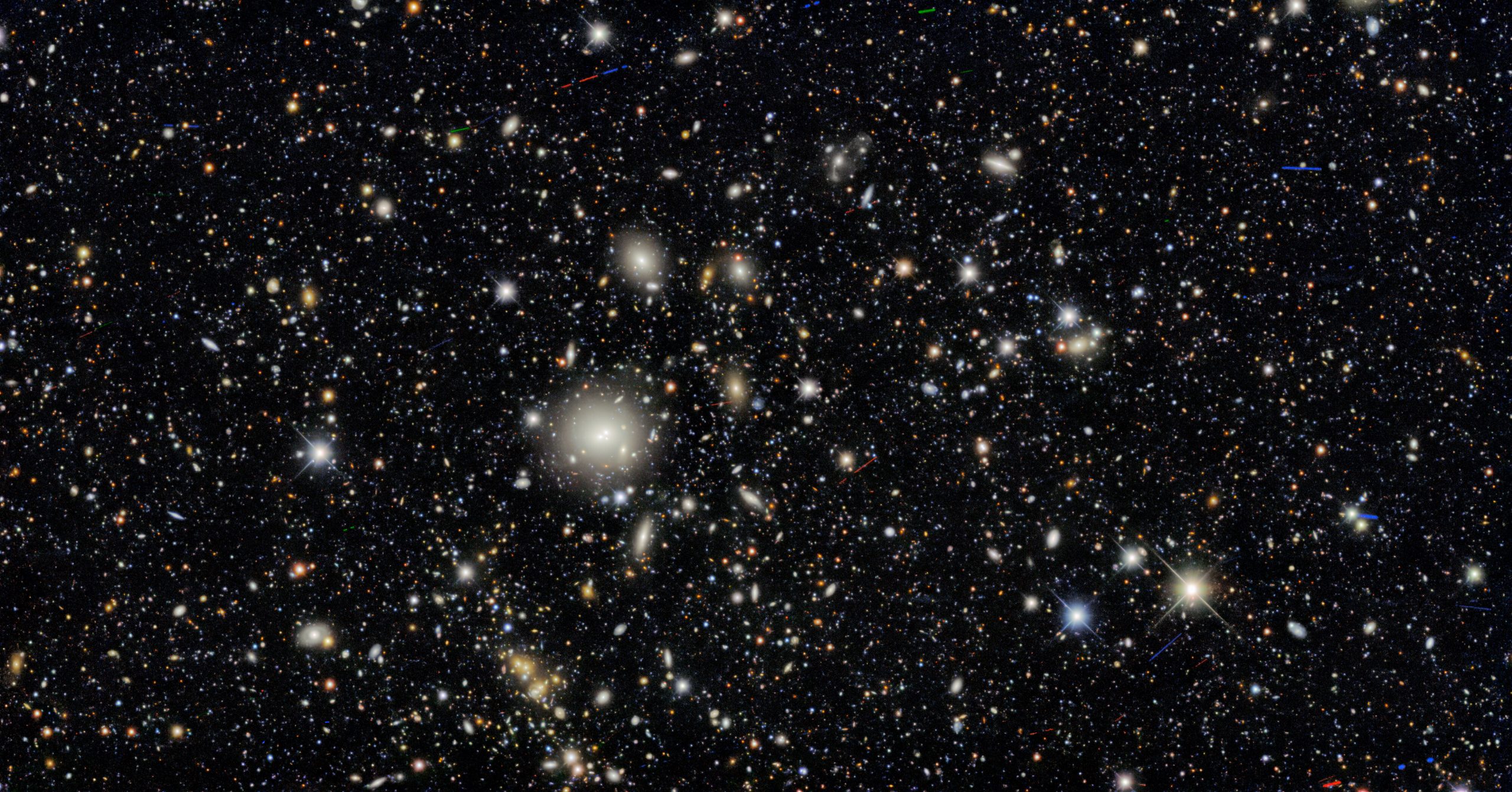 Dark energy © NOIRLab via Wikimedia
Dark energy © NOIRLab via Wikimedia
We do not yet know what dark energy is. It might be the energy of empty space — often called lambda or vacuum energy — which was part of Einstein's original equations. It is not visible to our eyes or telescopes, but it seems to be an energy arising from empty space itself. We think it is different from dark matter, yet because we do not know what either of them are, we refer to them as dark matter and dark energy. Our telescope has shown that what we see is very consistent with it being vacuum energy, but we need to gather more data to be sure.
Editor’s note: This article has been faithfully transcribed from the original interview filmed with the author, and carefully edited and proofread. Edit date: 2025
Discover more about
dark matter
Dunkley, J. (2019). Our Universe: An Astronomer’s Guide. Pelican Books
Madhavacheril, M.S. et al. (2024). The Atacama Cosmology Telescope: DR6 Gravitational Lensing Map and Cosmological Parameters. The Astrophysical Journal, 962 113.
Dunkley, J., Komatsu, E., Nolta, M. R., et al. (2009). Five-year Wilkinson Microwave Anisotropy Probe (WMAP) observations: Likelihoods and parameters from the WMAP data. The Astrophysical Journal Supplement Series, 180(2), 306–329.
Zwicky, F. (1933). Die Rotverschiebung von extragalaktischen Nebeln. Helvetica Physica Acta, Band 6
Rubin, V.C., Ford, W.K., Jr (1970). Rotation of the Andromeda Nebula from a Spectroscopic Survey of Emission Regions. Astrophysical Journal, vol. 159, p.379